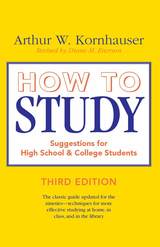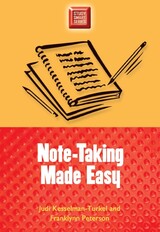
An enhanced edition of this textbook is available on the Press’s Manifold platform: https://temple.manifoldapp.org/projects/bridges

*Mastering rather than just memorizing material
*Learning the secrets of mental preparation before tackling difficult assignments or exams
*Strengthening skills for better reading, note taking, and listening
*Improving use of time in the classroom, the library, and at home
It offers a wealth of advice, from the commonsensical ("Never begin study immediately after eating" and "Check every tendency to daydream") to the more psychological ("Use your knowledge by thinking, talking, and writing about the things you are learning").
Thoroughly revised and updated, this powerful little book can help any motivated and capable student work smarter, not just harder, from high school through college.
When he wrote How to Study Arthur W. Kornhauser (1896-1990) was associate professor of business psychology at the University of Chicago.

Updated and revised edition
As every student quickly learns, merely sitting through a class and paying attention is usually not sufficient to ensure good grades. The proper taking of good notes is essential. Note-Taking Made Easy tells why the student should take his or her own notes (rather than buying them or taping lectures), and tells exactly how to determine what is worth noting, whether during a lecture, classroom discussion, even from a book or during a meeting.
The authors describe the two most successful methods of organizing notes—outlining and patterning—and provide shortcuts to really make note-taking easy, from shorthand devices to abbreviations.
Special sections are devoted to taking notes from texts, fiction as well as nonfiction, and handling charts, graphs, and photos. A final chapter shows how to tie together notes from various sources.
This STUDY SMART reference guide series, designed for students from junior high school through lifelong learning programs, teaches skills for research and note-taking, presents strategies for test-taking and studying, provides exercises to improve spelling, grammar, and vocabulary, and reveals secrets for putting these skills together in great essays.
READERS
Browse our collection.
PUBLISHERS
See BiblioVault's publisher services.
STUDENT SERVICES
Files for college accessibility offices.
UChicago Accessibility Resources
home | accessibility | search | about | contact us
BiblioVault ® 2001 - 2024
The University of Chicago Press









